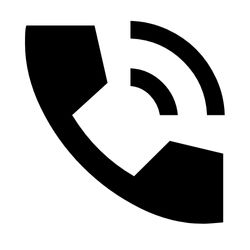Bone conduction hearing technology is a revolutionary way for individuals with or without hearing loss to experience sound.
Unlike traditional hearing aids that amplify sound waves and send them into the ear canal, bone conduction hearing devices use vibrations to transmit sound through the skull and directly to the inner ear.

How Bone Conduction Hearing Technology Works
The inner ear, also known as the cochlea, is responsible for converting sound waves into electrical signals that are sent to the brain.
In individuals with hearing loss, the cochlea may not be able to properly process these sound waves.
Bone conduction hearing technology bypasses this issue by vibrating the skull and allowing the cochlea to receive the vibrations directly.
There are two main types of bone-conduction hearing devices:
Bone Anchored Hearing Aids (BAHA): These devices are surgically implanted and use a small magnet to connect to an external sound processor. The sound processor sends vibrations through the skull and directly to the inner ear.
Bone Conduction Headphones: These devices sit on the outside of the ear and use a transducer to send vibrations through the skull and directly to the inner ear.
Benefits of Bone Conduction Hearing Technology
](https://mermaid.live/edit#pako:eNo9j70OgzAMhF_F8lxegKESP0O7VaIbYbAStyAlMQrJgBDv3lCq3nS6-yydN9RiGEt8B5pHeLbKQ1bVN6JHyzRAUVyh7uvqVkEBXQrvSZO1K9zdbMlHNsN5Un_Jpu8keQOPIJqXRcKvbY62On3b1-IZGvEm6TiJhxuTmcccLsOfwws6Do4mk9dtR6IwjuxYYZmt4RclGxUqv2eUUpRu9RrLGBJfMM2GIrcT5b8cli-yC-8fIxZLug))
Benefits of Bone Conduction Hearing Technology
Bypasses outer and middle ear issues: Traditional hearing aids can only amplify sound waves if the outer and middle ear is functioning properly.
With bone conduction hearing technology, the sound is delivered directly to the inner ear, bypassing any issues in the outer and middle ears.
Allows for a more natural hearing experience: Traditional hearing aids can sometimes amplify background noise and make it difficult to distinguish between different sounds.
Bone conduction hearing technology allows for a more natural hearing experience as the sound is delivered directly to the inner ear.
Can be used by individuals with conductive hearing loss: Conductive hearing loss is caused by issues in the outer or middle ear, such as a blockage or a malformation.
Traditional hearing aids may not be effective for these individuals, but bone conduction hearing technology can bypass these issues and provide a hearing solution.
Potential Risks and Side Effects
Surgical implantation: BAHA devices require surgical implantation and there is a risk of complications associated with any surgery.
Skin irritation: The external sound processor for BAHA devices can cause skin irritation if not properly cleaned and maintained.
Vibration sensation: Some individuals may feel a vibration sensation when using bone-conduction hearing devices.
In Summary
Bone conduction hearing technology is a revolutionary way for individuals with hearing loss to experience sound.
By bypassing outer and middle ear issues and allowing for a more natural hearing experience, bone conduction hearing devices can provide a hearing solution for those who may not be able to use traditional hearing aids.
However, it is essential to understand the potential risks and side effects before deciding if bone conduction technology is right for you.
Below, we have taken a look at bone conduction devices such as bone conduction headphones, hearing aids, etc.
We’ll further look into them by going through Categories, Buying Guides, Reviews, Features, Price Ranges, Things To Consider, Popular Brands, Popular Products, and FAQs amongst other things.
Bone Conduction Headphones
Bone conduction headphones are a type of headphones that work by transmitting sound vibrations through the bones of the skull, rather than through the air like traditional headphones.
They use transducers placed on the cheekbones or temples to convert sound waves into vibrations, which are then sent directly to the inner ear, bypassing the eardrum.
This allows the wearer to hear sounds from the environment around them, while still being able to listen to music or other audio.
It can prove to be very beneficial to certain individuals with poor hearing, active sports, working-class professionals, work-from-home businesses, parents, trucker drivers, etc.
Categories
 |
 |
 |
SportsSports headphones are a type of bone-conduction headphones designed for use during sports and outdoor activities. Read More |
CommunicationsCommunications headphones are a type of bone conduction headphones designed for communication and work purposes. Read More |
SwimmingSwimming headphones are a type of bone-conduction headphones designed to be used while swimming or for water-based sports. Read More |
Buying Guides
 |
 |
 |
Best SportsThe best Sports headphones for sports and other outdoor activities. Read More |
Best CommunicationsThe best Communications headphones for communication and other work purposes. Read More |
Best SwimmingThe best Swimming headphones for swimming and other water-based sports. Read More |
Other Buyers Guides include:
| Best Affordable | Best Budget | Best Top-Rated | Best for Running | Best for Swimming |
| Best for Gaming | Best for Musicians | Best for Sleep | Best for Kids | Best for Workout |
Features
 |
 |
 |
BluetoothBluetooth Headphones offer wireless Bluetooth connectivity. Read More |
MP3 PlayerMP3 Headphones have a built-in MP3 player for convenience and ease of movement. Read More |
Long Battery LifeHeadphones with long battery life offer extended periods of use between charges. Read More |
Other Popular Features Customers Look for include:
| Magnetic Charging | USB-C Charging | Micro-USB Charging | Fast Charging Support | Boom Mic |
| USB Dongle | IP68 Rated | IP67 Rated | IP55 Rated | FM Radio |
Price Ranges
 |
 |
 |
Under $50Headphones under $50. Read More |
Under $100Headphones under $100. Read More |
Under $200Headphones under $200. Read More |
Things To Consider
 |
 |
 |
Comfort and FitHow well comfortable and fitting the headphones are. Read More |
Sound QualityHow close to the sound quality that you can expect from a regular headphone. Read More |
BudgetWhile the headphones are considered cheap in comparison to their traditional counterpart. Read More |
Other things to consider include:
| Battery Life | Charging options | Water and sweat resistance | Microphone quality | Lightweight |
| Sound Leakage | Brand Reputation | Ease of use | Connectivity options | Durable build quality |
Popular Brands
 |
 |
 |
ShokzShokz headphones are a specific brand that uses patented technology to deliver high-quality sound through bone conduction. Read More |
VidonnVidonn headphones are another brand that uses a similar technology to Shokz bone conduction headphones. Read More |
NaenkaNaenka headphones are another brand that uses transducers to deliver sound through bone conduction. Read More |
Other Popular BC Headphones Brands include;
| Tayogo | 9 Digital | Moing | ReeRay | Mojawa |
| YouthWhisper | Finis | Forbrain | H2O Audio | Monodeal |
Popular Products
 |
 |
 |
Shokz OpenRun ProShokz OpenRun Pro Headphones are a specific model of Shokz headphones that are designed for runners and other athletes. Read More |
Shokz OpenRunShokz OpenRun Headphones are another specific model of Shokz headphones designed for runners and other athletes. Read More |
Shokz OpenCommShokz OpenComm Headphones are a specific model of headphones designed for communication and work purposes. Read More |
Other Popular BC Headphones include
| Shokz OpenRun Pro Mini | Shokz OpenRun Mini | Shokz OpenSwim | Shokz OpenMove | H2O Audio Tri Multi-Sport |
| Moing TouchBone BC-8 | Tayogo WB02 | Naenka Runner Caller | Naenka Runner Diver | 9 Digital Super Q3 |
FAQs
Here are some of the most frequently asked questions that most customers have about bone-conduction headphones:
What are bone-conduction headphones, and how do they work?
Bone conduction headphones are a type of headphones that transmit sound vibrations through the bones of the skull rather than through the air like traditional headphones.
They work by placing transducers on the cheekbones or temples that convert sound waves into vibrations, which are then sent directly to the inner ear.
Are the headphones safe to use?
Yes, the headphones are safe to use, as they don’t emit harmful levels of radiation, and they allow you to hear the sounds around you while still enjoying your music.
How is the sound quality of the headphones compared to traditional headphones?
The sound quality of the headphones is not as good as traditional headphones, as the vibrations produce a weaker bass response and less overall volume.
However, the sound quality is still good enough for most everyday uses.
Do the headphones work for people with hearing loss or impaired hearing?
Yes, the headphones can work for people with hearing loss or impaired hearing, as they bypass the ear canal and send sound vibrations directly to the inner ear.
How do the headphones fit on different head sizes and shapes?
Most bone headphones are adjustable and can fit on different head sizes and shapes, but it’s important to choose the right size and fit to ensure maximum comfort and sound quality.
Can the headphones be used while doing sports or other physical activities?
Yes, the headphones are ideal for sports and physical activities, as they allow you to listen to music while still being aware of your surroundings and hearing important sounds like traffic or people talking to you.
How long is the battery life of bone-conduction headphones?
The battery life of the headphones can vary depending on the brand and model, but most headphones offer around 6-8 hours of battery life on a single charge.
Can the headphones be used with a wired connection or only wireless?
The headphones can be used with both wired and wireless connections, depending on the model you choose.
Are the headphones compatible with different devices like smartphones, laptops, and tablets?
Most bone headphones are compatible with different devices like smartphones, laptops, and tablets, and they use Bluetooth technology for wireless connectivity.
What is the price range of the headphones, and are they worth the investment?
The price range of bone headphones can vary depending on the brand and features, but they typically range from $50 to $200.
Whether they are worth the investment depends on your personal needs and preferences.